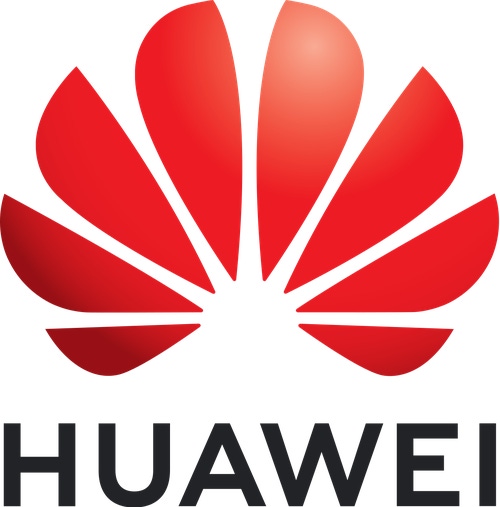Huawei Site Integration Services: Facilitating Transformation in the Site Infrastructure Industry & Enabling Operators to Achieve Digitalization
Digital site service capabilities, innovative ideas for solutions, and ecosystem-building systems have allowed Huawei to facilitate transformation in the site infrastructure industry and enabled operators to achieve digitalization.
August 30, 2018

In June 2018, Huawei Rotating Chairman, Eric Xu, released a clear timetable for 5G at Mobile World Congress Shanghai 2018. To help global operators roll out 5G networks, Huawei will launch E2E NSA 5G commercial systems on September 30, 2018, and E2E SA 5G commercial systems on March 30, 2019.
Operators and site service providers must answer the following questions about the site infrastructure industry in the 5G commercial network era: How can we quickly obtain new site locations for fast site construction as the number of required sites increases? What is the optimal solution for site deployment? How can we seamlessly develop existing sites towards 5G in order to protect investments?
The traditional manual site construction and maintenance mode is expensive, slow, and inefficient, which means it cannot meet the expectations of the industry or operators. To address these issues, Huawei proposes digital site solutions. Digital site service capabilities, innovative ideas for solutions, and ecosystem-building systems have allowed Huawei to facilitate transformation in the site infrastructure industry and enabled operators to achieve digitalization.
End-to-End Digital Site Service Capabilities
Digital site capabilities: In traditional site operation mode, as-built documents cannot be quickly updated, while format standards are different. This means that site surveys are required for each site expansion and reconstruction. In addition, sites are run in the dumb state, which causes frequent faults and high maintenance costs. To address these common problems facing the industry, Huawei takes advantage of 360-degree panoramic shooting and BIM modeling technologies to digitize physical assets such as site infrastructures, existing assets files, and telecom equipment. These assets are then stored on structured storage, and physical sites are mirrored in order to build virtual digital sites for online site surveys and quick solution design. By using Internet of Things (IoT) technology, Huawei provides solutions that monitor and manage dumb devices at sites to achieve real-time, manageable, and controllable site operations. These solutions use static and dynamic data at sites to create innovative applications, facilitate site construction and O&M transformation, reduce CAPEX and OPEX, and reconstruct TCO at sites.
Committed to maintaining data security, Huawei adopts the digital site architecture through hybrid cloud. This is where operators store all static and dynamic data on their private clouds or local servers, and innovative applications are deployed on the public cloud for local downloads and invocation.
Efficient site design capabilities: Huawei has been involved in site integration design solutions for more than 20 years, and standardizes and visualizes these integration design solutions. Huawei also ensures it is involved with the world's best design solutions in order to establish an excellent site solution database. This helps operators select site solutions on the cloud. In addition, it supports automatic solution production and 3D display, greatly improving site design efficiency, optimizing solutions, and reducing site construction costs.
Innovative Site Solutions
Huawei quickly customizes different site solutions using the digital site platform to meet scenario-specific requirements, which can be classified into three types:
a. All-In-One Tube Site Solution for Easy Acquisition of Site Locations in Urban Areas
In urban and suburban areas, acquiring site locations can be difficult and time-consuming. The all-in-one tube site solution installs site equipment into a tower to reduce floor space and ensure that there is no visible communications equipment. This environment-friendly solution greatly reduces site acquisition times.
b. Zip Site Solution with Low Costs in Rural Areas
In remote rural areas, traditional sites require high levels of investment but have long return on investment (ROI) periods. To deal with this challenge, the zip site solution complies with the all-in-one design concept, converting the tower into a simple pole, and using solar power instead of diesel power based on small-scale requirements. The zip site solution also adopts a free-standing design to eliminate the need for excavations or concrete, maximizing ROI and reducing maintenance costs.
c. Scalable 1+X modular tower solution
In scenarios where multiple operators share a network, or the network of a single operator is gradually evolving, this solution uses a modular, building-block tower. This tower has standardized components and a standardized installation processes and can quickly change height and load on demand. This makes it incredibly easy to expand and evolve, significantly reducing the initial investments required for site construction.
Establishing a Sustainable Ecosystem Through Mutually Beneficial Cooperation
Building and operating communication site infrastructures is a complex operation, involving site acquisition, design, construction, and all subsequent required maintenance. In this field, Huawei works with the world's leading operators, infrastructure providers, and material suppliers, as well as other excellent institutions, to promote digital site development. Huawei is also cooperating with government infrastructure management agencies, road administration companies, and building property owners to create the site ecosystem alliance, address site acquisition issues, optimize site TCO, and accelerate site TTM. All of this is being done while achieving site sharing and mutually beneficial outcomes. In the Indonesian market, the Huawei-led site alliance has helped operators to shorten the site acquisition time from 9 months to less than 6 months. This represents a 60% reduction in rental costs, while also helping site owners gain extra rental income every month.
Huawei site integration services aim to provide telecom operators with all-scenario digital site, wireless site, OSP, ODN, and energy integration services, including planning, evaluation, and design solutions for project management. To date, Huawei has helped customers in over 140 countries deploy 134,000 new sites, reconstruct more than 950,000 sites, and deploy over 250,000 km of backbone optical cables. In total, these projects provide ODN integration services to 1.6 million users. Huawei site integration services serve 45 of the world's Top 50 operators.
You May Also Like










